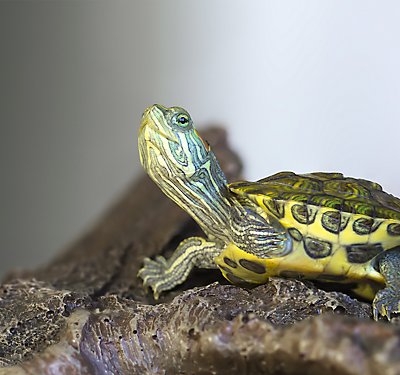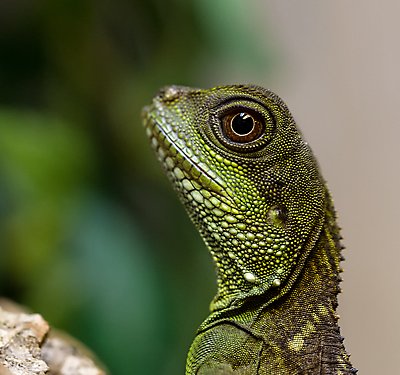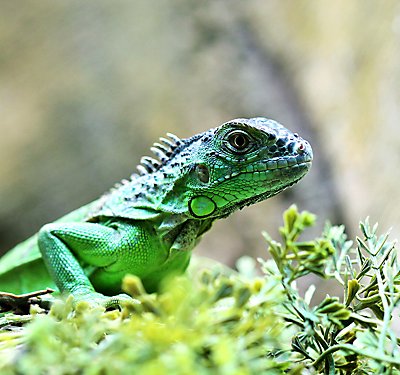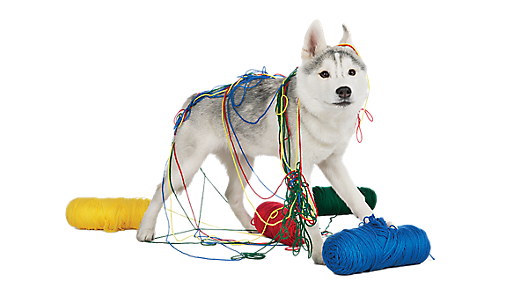
 top
top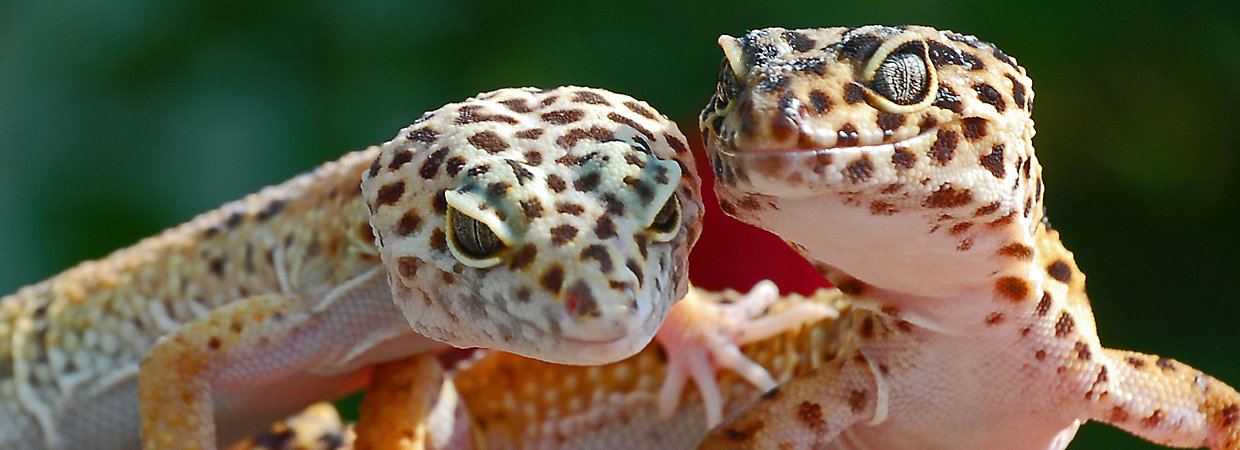
REPTILE / health & care
Care guide: Leopard geckos
Tips for feeding, housing and caring for your leopard gecko.
Overview
Leopard geckos – leos for short – make excellent pets for both beginners and experienced reptile keepers. They are gentle, easy to handle, and have beginner friendly habitats and care requirements compared to other reptiles.
Here’s everything you need to know before you bring your new leopard gecko pet home.
What to know about leopard geckos
- Experience Level: Beginner.
- Origin: Leopard geckos are native to the semi-arid environments of Afghanistan, Iran, Pakistan and Northwest India.
- Size: Leopard geckos grow up to 10 inches (25 cm) long.
- Lifespan: Leopard geckos live for 15-20 years, which is why owning a leo is a big commitment.
- Diet: Leopard geckos are insectivores, meaning they eat only insects.
- Activity: Leos are crepuscular, meaning they are most active at dawn and dusk. During the heat of the day, they like to hide under rocks to avoid predators and high temperatures.
- Appearance: They’re usually yellow and white with spotted dots, hence their name.
- Anatomy: Unlike other geckos, they don’t have sticky toe pads so they can’t climb walls or glass. Leopard geckos store fat and nutrients in their tails as an emergency source of energy. They can also detach their tail when they’re caught by a predator – which is why you should never pick up a leopard gecko by its tail. Leopards also have outer ears, and unlike other geckos, they have eyelids!
- Shedding: Most leos will shed their skin every 4 to 8 weeks. Don’t be surprised if you see your pet eating its shed skin – it’s only trying to regain some of the nutrients it’s losing.
- Handling: Leos are okay with some contact, but handling your pet too much may stress it out. Like all reptiles, leos may carry infectious diseases, so it’s important to wash your hands before and after handling your lizard or its habitat.
- Social: While geckos are solitary animals, it’s possible to have more than one in the same terrarium as long as just one of them is male.
Preparing your leopard gecko’s home
Before you bring a leo home for the first time, you’ll need to create a healthy habitat with appropriate heating and lighting to ensure your lizard’s well-being. Here’s a checklist of the reptile supplies you’ll need to prepare a suitable environment.
- Terrarium: 20-gallon terrariums are ideal for one adult leopard gecko – you’ll need a larger space if you’re getting multiple geckos. Your gecko’s tank should be well-ventilated with a screened lid.
- Substrate: Line the floor of the terrarium with reptile carpet or ceramic tiles. Reptile carpet is an absorbent surface that’s soft on your Leo’s tummy and feet. Avoid loose substrates like sand, because leos can accidently eat the sand which can affect their intestines and cause them to get sick. Be sure to remove your lizard’s droppings at least once a week and thoroughly clean the substrate and bedding biweekly. Use reptile-safe habitat cleaners, sanitizers and deodorizers.
- Heating: Leos originate from semi-arid deserts, so they love a warm, dry environment. They also need a hiding place that’s moist – somewhere they can hang out when it’s time to shed their skin. You can replicate their natural environment by having both warm and cool areas of the tank. Put a heat lamp on one end of the habitat and measure the temperature at both the near and far ends. Maintain a temperature of 75-85°F on the cool side and 87-92°F on the warm side.
- Moisture: Humidity in the terrarium helps to keep your leopard’s skin nice and healthy. Humidity in your terrarium should range from 10% to 30% – you can measure it with a hygrometer. If you need to increase the humidity, use a reptile habitat fogger or mister.
- Lighting: Leopard geckos need 12 hours of visible light each day. Use a low-wattage UVA/UVB light source with a timer that will mimic day and night schedules. A UVB light can also help with calcium absorption.
- Hides: Like most lizards and chameleon reptiles, leopard geckos love to hide in different spaces. Give your pet at least three hiding places – one that’s cooler, one that’s warmer and a moist hide for shedding.
- Water dish: Place fresh water in a shallow dish.
- Food dish: Placing your pet’s food in a reptile food dish protects it from the bacteria that’s present in their substrate.
- Habitat decor: Rocks, branches and safe plants in the terrarium will give your gecko things to explore and allow it to climb close to the warmth of the heating lights or find a convenient hideaway. Moistened moss on the warm side is a great aid in shedding skin.
What to feed your leopard gecko
Leopard geckos are insectivores – they’re wild about bugs! Their favorite meals are live insects – succulent worms and “gut-loaded” crickets that help geckos stay healthy. Gut loading crickets involves feeding them nutrient-boosting foods so that the nutrients and vitamins are passed on to your leo when it eats the crickets. Be sure to consult with your veterinarian about your leo’s diet.
What to feed your gecko
- Crickets are your leo’s favorite dish!
- Mealworms are another common menu item.
- Dubia roaches are highly nutritious.
- Waxworms and super worms make great treats, but you should go lightly because they are high in fat.
- Adult leos should eat 4 to 5 times a week, while juveniles will need a daily meal.
Supplements
- Calcium supplement: To ensure your gecko has adequate calcium intake, dust a calcium supplement on the insects that you feed it 2 to 3 times a week.
- Multivitamin powder: Dust your Leo’s meal with a multivitamin once a week for juveniles and twice a month for adults.
Water
Leopard geckos drink water from large shallow dishes. They may soak in these same dishes to stay hydrated. It’s important to empty, clean and refill their water dish every day.
Keeping your leopard gecko healthy
Shortly after you get your Leo, it’s a good idea to have it checked by a reptile veterinarian. When you first bring your pet home, don’t handle it for the first three or four days – it needs to get used to its new home. While leopard geckos don’t necessarily mind being handled occasionally, too much handling will create stress.
Regularly check your Leo for signs of illness like:
- Eating or drinking less than usual.
- Weight loss.
- Hiding more than usual.
- Discolored skin.
- Noticeable problems with shedding.
- Swollen joints.
- Runny or abnormal droppings for more than two days.
- Lack of droppings for several days.
- Abnormalities with the mouth, nose or eyes.
FAQs.
Are leopard geckos good pets?
Leopard geckos make excellent pets! They are hardy, have a calm temperament and have beginner friendly habitats and care requirements compared to other reptiles. Their small size and docile nature make them suitable for both beginners and experienced reptile keepers. Plus, they’re fascinating to watch, especially during their nocturnal activities.
Do leopard geckos like to be held?
Leopard geckos generally tolerate handling well, but they don’t necessarily "like" to be held in the way that cats or dogs might. Each gecko has its own personality; some may be more tolerant of handling than others. It's important to handle them gently and infrequently to avoid causing them stress. Start with short handling sessions to build trust and always support their body properly.
What does a leopard gecko need to survive?
Leopard geckos need a proper enclosure with a safe substrate. Lighting and heating should provide a cool side (75-85°F) and a warm side (88-92°F). They need at least three places to hide – one on the cool side, one on the warm side and a moist hide for shedding. In addition to freshwater, leopard geckos need a diet of live insects that may include crickets, mealworms or Dubia roaches, dusted with calcium and vitamins.
How long do leopard geckos live?
Leopard geckos can live up to 15-20 years with proper care.
Can I house multiple leopard geckos together?
It's best to house leopard geckos separately to avoid aggression. If you do house multiple geckos together, ensure there is only one male in the group and provide enough space to avoid conflicts.
Do leopard geckos need UVB lighting?
Leopard geckos do not require UVB lighting, but it can be beneficial for their overall health.
How often should I clean the enclosure?
Spot clean the enclosure daily and perform a thorough cleaning once a month.
Related Articles.
- 10 Things You Need to Know About Keeping Reptiles as Pets
- The Cool Factor: 7 Reptiles to Chill with
- What Climate Does My Reptile Need?
Need other supplies while you’re shopping for a leopard gecko for sale? PetSmart carries a wide range of gecko cages and gecko tanks as well as starter kits, food & food feeders, habitat decor and other reptile supplies. Consult our Reptile Care Guide for a complete list of everything you need to keep your gecko happy and healthy.
PetSmart also offers convenient shopping with Curbside Pickup or in-store pickup. Need something today? We have select items available for Same-Day Delivery in most areas powered by DoorDash. For items you purchase frequently, PetSmart has Autoship that automatically delivers the items you want to your door as often as you’d like. Check the website to see which items are eligible.
Information in this article is not intended to diagnose, treat or cure your pet and is not a substitute for veterinary care provided by a licensed veterinarian. For any medical or health-related advice concerning the care and treatment of your pet, contact your veterinarian.























